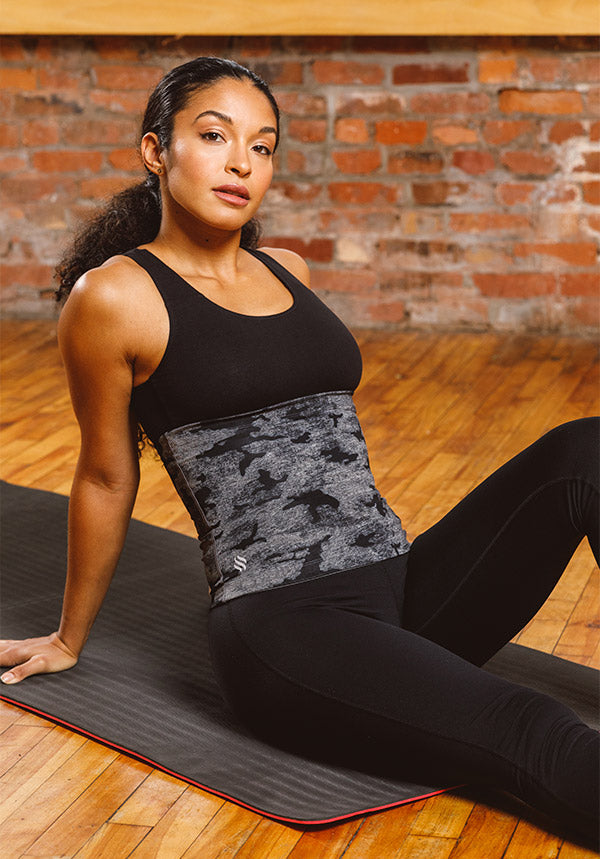As the years go by, we start being able to appreciate the importance of good posture. But what is "good posture"?
Essentially having a good posture means that we align our body in such a way as to not overstress any muscle group of our body. Good posture helps maintain an anatomical balance and protects our muscles, ligaments, and bones from injuries and chronic health problems.
Why is good posture important?

Poor posture can cause a wide range of problems, from chronic neck and back pain to breathing issues and spinal deformation.
Having a poor posture by not sitting correctly or slouching when you're on your feet can put pressure on your nerves at the back of your head, triggering headaches and migraines. Poor posture doesn't just impact your neck muscles; it can have a negative effect and cause pain to your upper and lower back and shoulders.
Poor posture has also been found to increase the chances of developing circulation problems and getting varicose veins. Studies have shown that people who sit all day are more prone to bad circulation health problems.
Your lungs can also take a hit by poor posture. Suppose you're hunching and leaning towards the front when sitting. In that case, you restrict the airflow into your lungs, which can negatively influence your lung capacity leading to breathing problems as your organs aren't getting enough oxygen.
The potential health issues don't stop there; by slouching, you also compress your abdominal organs, restricting your digestive tract. That's detrimental to your metabolism and the ability to process and digest food properly.
What does good posture look like?

The proper standing posture requires your head to rest in a neutral position without leaning forwards or backward, your back should be straight with faint curves near your lower back and your shoulder blades, your hips should be aligned with your shoulders and your knees, and everything should line up from top to bottom.
The proper sitting posture requires that you look straight ahead and not upwards or downwards, your neck should be relaxed and you should not have to flex to support your head, ears should line up with your shoulders, you should not be leaning forwards or backwards, your shoulders pulled back and your feet should naturally rest on the ground and not tucked under you chair or stretched out in front.
5 exercises and tips for good posture
Read on to discover five simple tips and easy exercises to help you achieve and maintain a good posture.
1) Bridges
Bridges is an excellent exercise targeting your glutes and lower back muscles. Lie flat on your back and bend your knees while you pull your heels towards your bottom. Simultaneously, raise your hips, pushing your entire body up and creating an arch from your shoulders to your knees. Keep your shoulder relaxed, and feel free to extend your arms on either side to help you maintain balance. Do 3 sets of 8 repetitions each.
2) Head retractions
Head retractions will help strengthen the neck muscles which support your head. The form is very similar to Bridges. Lie flat on the floor with your knees bent and your heels close to your bottom, and while lying flat and holding your core still, pull your chin towards the floor, making your head tilt forwards - at the end of the motion, hold your head still for 10 to 15 seconds. Repeat this 8 to 10 times.
3) Russian twists
Sit on the floor and bend your knees and keep your feet off the ground (if you can't maintain that position, it's ok to rest your feet on the ground). Now, tighten your core and abdominal muscles and rotate only your upper body from one side to the other with a twisting motion. You should feel tension in your abdominal area, especially the obliques (side abs). Do 3 sets of 15-20 repetitions each.
4) Head nods and head turns
Head nods are very easy. Stand up straight, keep your arms on your thighs and start moving your head all the way to the front and back in slow motion. When you reach the end of your range, keep your head there for 20 seconds. Do 3 sets of 5 reps each.
Head turns are pretty self explanatory. Stand up straight without moving your core, arms, or body, simply turning your head to either side facing straight forward over your shoulders, and keeping that position for 20 seconds. Do 3 sets of 5 reps each.
5) Planking
Planking is a great exercise, helping not just with good posture but with strengthening all the muscles in your body. There are a few variations to the "classic" plank exercise that focus on different body parts; we're going to explore the forearm plank, which is the best all around version.
Start by positioning your elbows directly under your shoulders and rest your forearms on the ground. Keep your hands in fists or rest them flat on the ground (it doesn't matter, do whatever feels more comfortable to you). Keep your body in a straight line and pop on your toes, creating a straight line from your shoulders to your feet. You need to keep your core and entire body tight and engaged; you should be feeling a burn in your muscles a few seconds after you assume the position. Squeeze your shoulder blades back and together and stay still for as long as you can. Rinse and repeat 3 to 5 times as you become more and more comfortable with the exercise. Increase the time you plank or the number of reps.


